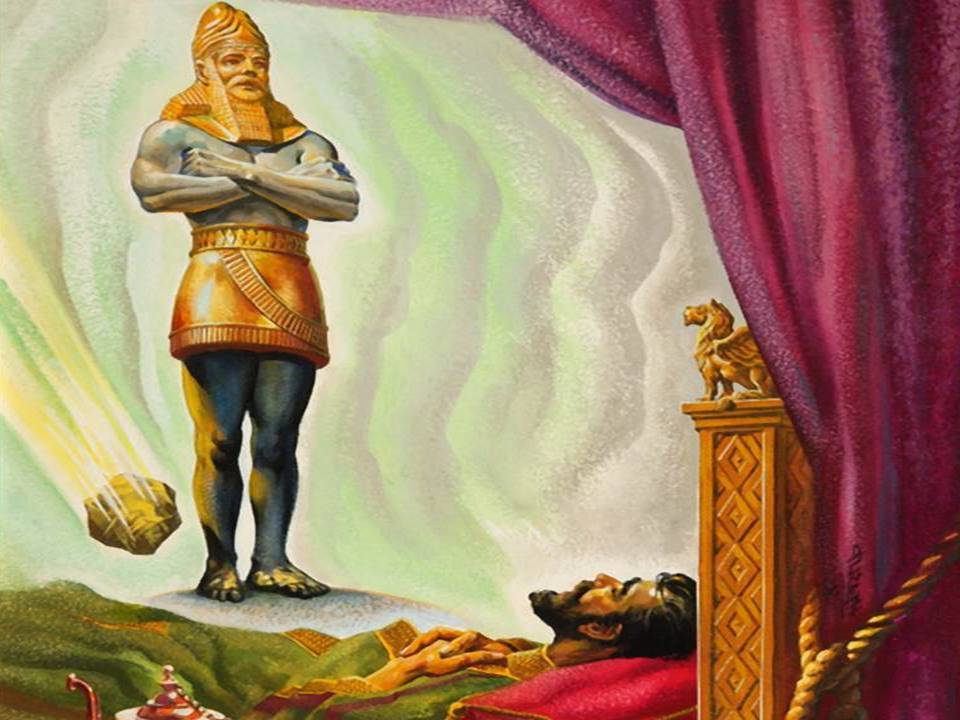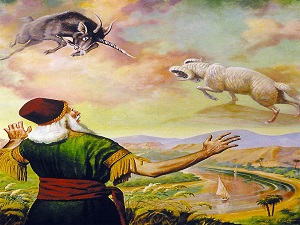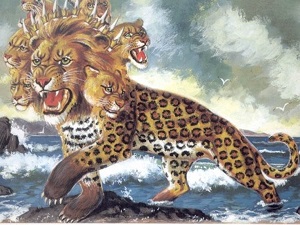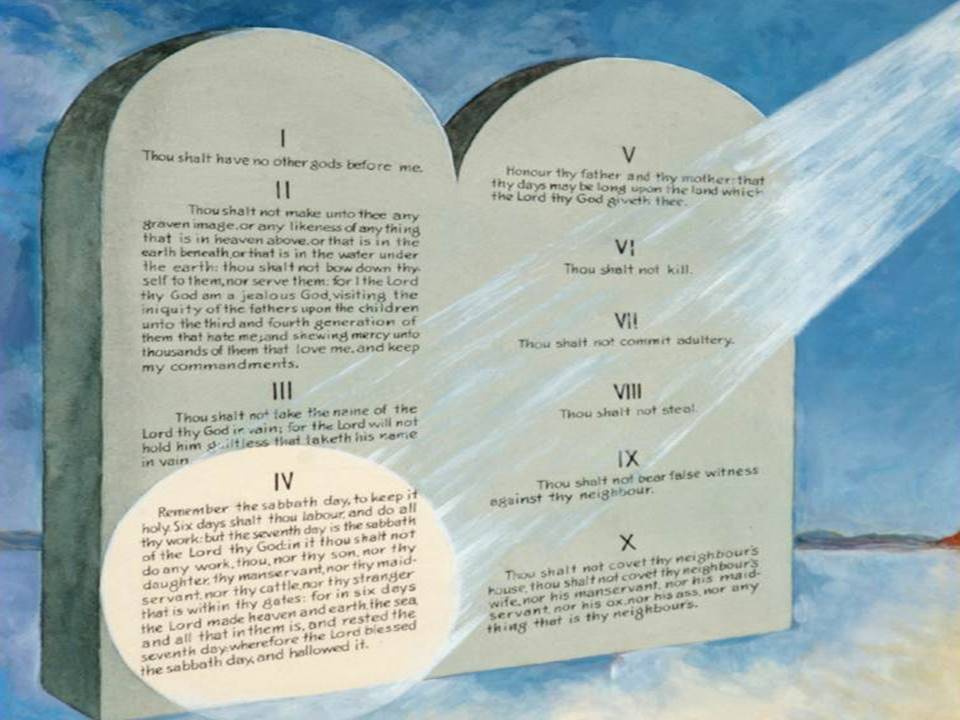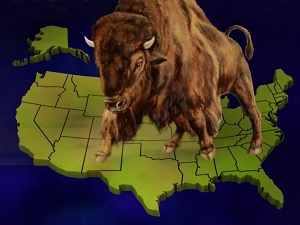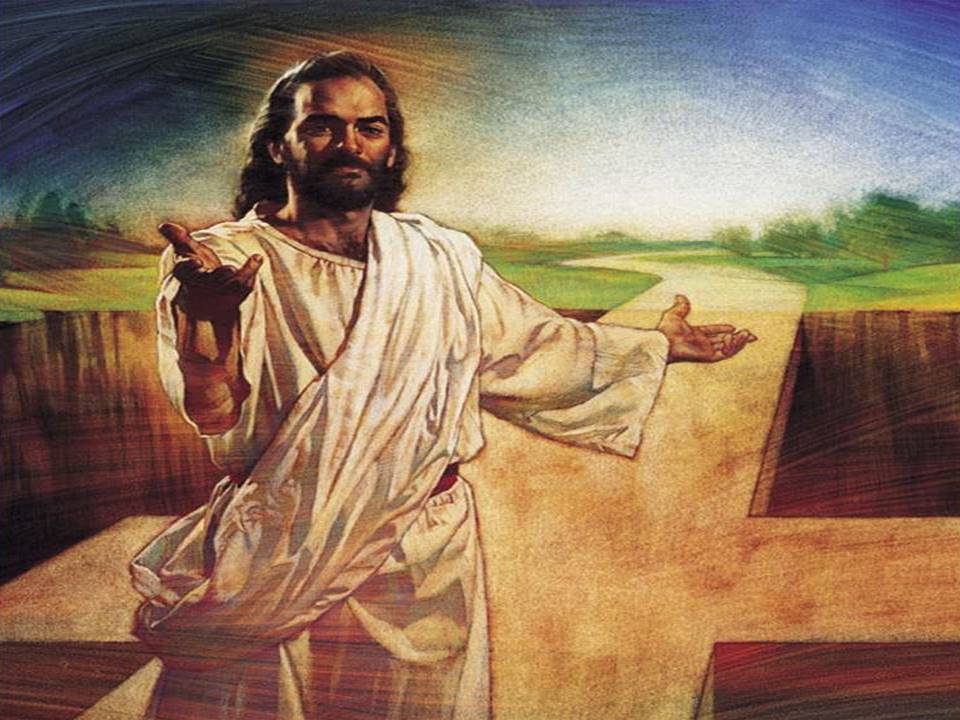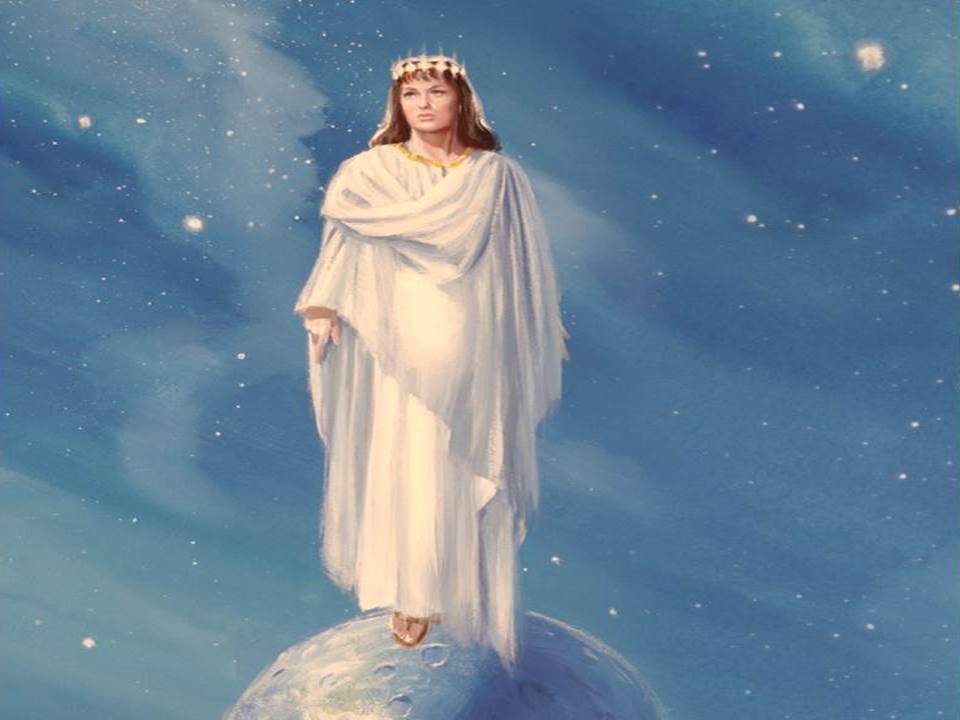LESSON 5
THE STRANGE BEASTS OF DANIEL 7
You are welcome to another edition of
Insights from God's Word, a Bible Study Programme that is committed to sharing God's Word by allowing the Bible to speak for itself.
In this edition, we continue with our series on
The Final Events of Bible Prophecy. The topic for this study is:
The Strange Beasts of Daniel 7. The following footnotes have been gleaned from our Bible study reference of
Daniel 7:1-7.
1. Before we proceed with this study, there is the need for us to understand the Bible prophecy symbols that are used in this study to allow for a complete understanding of this important apocalyptic prophecy. In Bible prophecy, we allow the Bible to interpret itself (
2 Peter 1:19-20). Three important symbols in this study and their meanings from Scripture are as follows:
a. Seas represent a multitude of people or a densely populated area (
Revelation 17:15).
b. Wind represents strife or war (
Jeremiah 49:36-37 ).
c. Beasts represent kingdoms, kings or nations (
Daniel 7:17, 23).
2. This prophecy in
Daniel 7 was given by God to Daniel in the first year of Belshazzar, king of Babylon (
Daniel 7:1). Even though God had revealed the future of our world to Daniel through King Nebuchadnezzar's dream in
Daniel 2, there were other details that the Lord wanted to add for the benefit of those of us who will be living during the time of the end.
3. In revealing Bible prophecy to His servants, God uses the basic principle of teaching. That is, the principle of moving from the known to the unknown. This is also referred to as the repeat and enlarge principle. We will discover in this study and other subsequent ones, that God will usually begin a new revelation by repeating what He has already revealed, and then enlarge upon that with new or further details.
4. From
Daniel 7:2-3, the Bible teaches that Daniel saw in his vision by night, and behold, the four winds of the heaven strove upon the great sea. And four great beasts came up from the sea, diverse one from the other. We have already studied that winds denote war or strife, seas represent a multitude of people and beasts denote kingdoms. From
Daniel 7:2-3, the Lord revealed unto Daniel that through the crucible of war, in the densely populated areas of the ancient world, four world empires or kingdoms will arise.

5. This study on
Daniel 7:1-7 is basically parallel to our previous study on the Ancient King's Dream as found in
Daniel 2. Just as the various metallic parts in
Daniel 2 represented the four world empires of the ancient world, so does the various beasts in
Daniel 7 represent the same ancient world empires. For instance, from
Daniel 7:17, the prophet Daniel records that; "These great beasts, which are four, are four kings, which shall arise out of the earth." In the verse 23 of this same chapter, the prophet Daniel once again records this; "The fourth beast, shall be the fourth kingdom upon the earth..." Thus beloved, the entire prophecy we are considering in this study is not to be taken literal, but rather, symbolic. To understand this prophecy, one will have to decode the various symbols by allowing the Bible to interpret itself as we are doing now.
6. Friends, according to Daniel's vision, the first beast that he saw coming up from the sea was like a lion with eagle's wings (
Daniel 7:4). This first beast represents Babylon, the first kingdom of the ancient world. The lion with eagle's wings was actually a fitting symbol for Babylon. Babylon was as strong as a lion; the king of the beasts. The wings on this lion denote the speed with which Babylon conquered the ancient nations (see
Habakkuk 1:6-8). Babylon ruled the ancient world from 605 B. C. to 539 B. C.
7. After the lion with eagle's wings, the prophet Daniel saw in his vision, a second beast coming up from the sea. This time, the prophet saw a bear which had raised up itself on one side, and had three ribs in the mouth of it between the teeth of it (
Daniel 7:5). The bear represents the combined kingdoms of the Medes and Persians. Medo-Persia became the second world empire of the ancient world, after defeating Babylon on October 13, 539 B. C. Daniel saw in his vision that the bear had raised up itself on one side. From History, we learn that even though the second empire of the ancient world was a joint empire between the Medes and the Persians, the Persians were stronger than the Medes. In fact, this empire was generally known as the Persian Empire. Before Medo-Persia could become a world superpower, they had to conquer three important territories or nations. This is symbolized by the three ribs in the mouth of this bear. History records that the combined power of the Medes and Persians successfully defeated the nations of Babylon, Lydia and Egypt in order to assume control of the ancient world. The Medes and Persians ruled from 539 B. C. to 331 B. C.
8. After the bear which had raised up itself on one side, Daniel saw in his vision, a third beast coming up from the sea. This beast was like a leopard with four heads, and four wings of a fowl at the back of it (
Daniel 7:6). This beast represents the Grecian empire, the third superpower of the ancient world. Led by Alexander the Great, the Grecian army defeated Persia's Darius III at the battle of Arbela in 331 B. C. Just as the eagle's wings on the back of the lion denoted speed of conquest at war, the four wings of a fowl at the back of this leopard represent an unparalleled speed of conquest at war. If Babylon was swift in conquering nations, the Grecian empire was unsurpassed under the leadership of Alexander the great. By the time Alexander was 33 years, he had the world at his feet. Even though he conquered the world within a very short period, he could not conquer himself. He died of a fever which was brought on by excessive intake of alcohol. When he was about to die, he was asked the straightforward question: To whom will you leave the kingdom? And his reply was; "the strongest". Within a period of 20 years the Grecian empire was plunged into civil war as the generals of Alexander the great tested their strength against each other. It was not until the Battle of Ipsus in 301 B. C., that four of Alexander's generals divided the Grecian empire among themselves. These four generals were Cassander, Lysimachus, Ptolemy and Seleucus. Cassander took Greece and Macedonia; Lysimachus took Thrace, Bithynia, Pergamum and much of Asia Minor; Ptolemy took Egypt, Lybia, and Palestine; while Seleucus took over Asia Minor, Syria, and Persia which included Babylon. Thus friends, the four heads of the leopard represent the four generals who took over the Grecian empire after the demise of Alexander the great. Greece ruled the ancient world from 331 B. C. to 168 B. C.
9. After the leopard with four wings of a fowl, Daniel saw in his vision, a fourth beast coming up from the sea. This beast was quite different from the other beasts. Daniel describes this fourth beast with the following graphic words: "After this I saw in the night visions, and behold a fourth beast, dreadful and terrible, and strong exceedingly; and it had great iron teeth: it devoured and brake in pieces, and stamped the residue with the feet of it: and it was diverse from all the beasts that were before it; and it had ten horns" (
Daniel 7:7).
Beloved, this fourth beast represents the Roman Empire, which became the fourth world empire of the ancient world. At the battle of Pydna on June 22, 168 B. C., the Roman Empire defeated the divided Grecian empire to become the fourth superpower of the ancient world. The Roman Empire was dreadful and terrible. Her Caesars were worshipped as gods. Offenders of Roman law were given some of the harshest punishments our world has ever known. The Roman Empire utilized crucifixion often as a means of execution, and through this painful death executed our Lord, Christ Jesus. Under the harsh rule of Pagan Rome, several hundreds of people (especially Christians) were fed to ravenous beasts, crucified or beheaded. The Roman Empire ruled the longest from 168 B. C. to 476 A. D.
10. But then, we are told in
Daniel 7:7 that this dragon like beast also had ten horns. Daniel records this explanation concerning the ten horns: "And the ten horns out of this kingdom are ten kings that shall arise..." (
Daniel 7:24 ). Notice that these ten kings who represent the ten horns arise out of the fourth kingdom (which is the Roman Empire).
Beloved, the prophecy in
Daniel 7 does not say anything about a fifth beast coming up from the sea. In other words, the prophecy did not predict anything such as a fifth world empire. Rather, as Daniel was clearly told in the verse
24 of Daniel 7, the Roman Empire was to be divided into ten distinct segments, with ten kings reigning independently apart from each other. And friends, this is exactly what came to pass. History records that due to a high level of greed and moral decay, the Roman empire became easy prey for Barbarian tribes to the point that by 476 A. D., the empire had disintegrated into ten distinct segments. These ten nations comprising Alemanni (Germany), Franks (French), Anglo Saxons (English), Visigoths (Spanish), Burgundians (Swiss), Lombards (Italians), Suevi (Portuguese); and Heruli, Vandals and Ostrogoths (Now extinct) became the progenitors of modern day Europe. As the prophecy predicted, the fourth world empire was actually divided into various independent nations. And these nations have remained separate until now, despite the attempt of various political leaders to weld the empire together.
11. Beloved, all that we have studied so far, is parallel to the dream God gave king Nebuchadnezzar in
Daniel 2 . Even though the dream in
Daniel 2 expanded to the end of this world, God had more details to give His children concerning end time events. And so in
Daniel 7, we discover fresh details which cannot be found in
Daniel 2. As I mentioned earlier, God basically teaches His children from the known to the unknown, using what is popularly known as the repeat and enlarge principle.
Friends, the new detail that God adds in the vision of Daniel 7, concerns the characteristics of the antichrist power we have studied about in in 2 Thessalonians 2:1-12. This time around, instead of the names; man of sin or son of perdition, God uses the term; the little horn to depict the same antichrist power, that was to bear rule over the whole world. We read from
Daniel 7 verses 8 and 25 the following:
"8 I considered the horns, and, behold, there came up among them another little horn, before whom there were three of the first horns plucked up by the roots: and, behold, in this horn were eyes like the eyes of man, and a mouth speaking great things… 25 And he shall speak great words against the most High, and shall wear out the saints of the most High, and think to change times and laws: and they shall be given into his hand until a time and times and the dividing of time." Exhortation: "Remember the former things of old: for I am God, and there is none else; I am God, and there is none like me, Declaring the end from the beginning, and from ancient times the things that are not yet done, saying, My counsel shall stand, and I will do all my pleasure" (
Isaiah 46:9-10 ).
In our next study, we will consider the topic:
The Little Horn of Daniel 7. The Bible study reference for this study is
Daniel 7:8-28. Please find time to go through this Bible study reference before the next study.
Stay blessed and keep shining for King Jesus.
Maranatha!
Powered by White Throne Ministries







